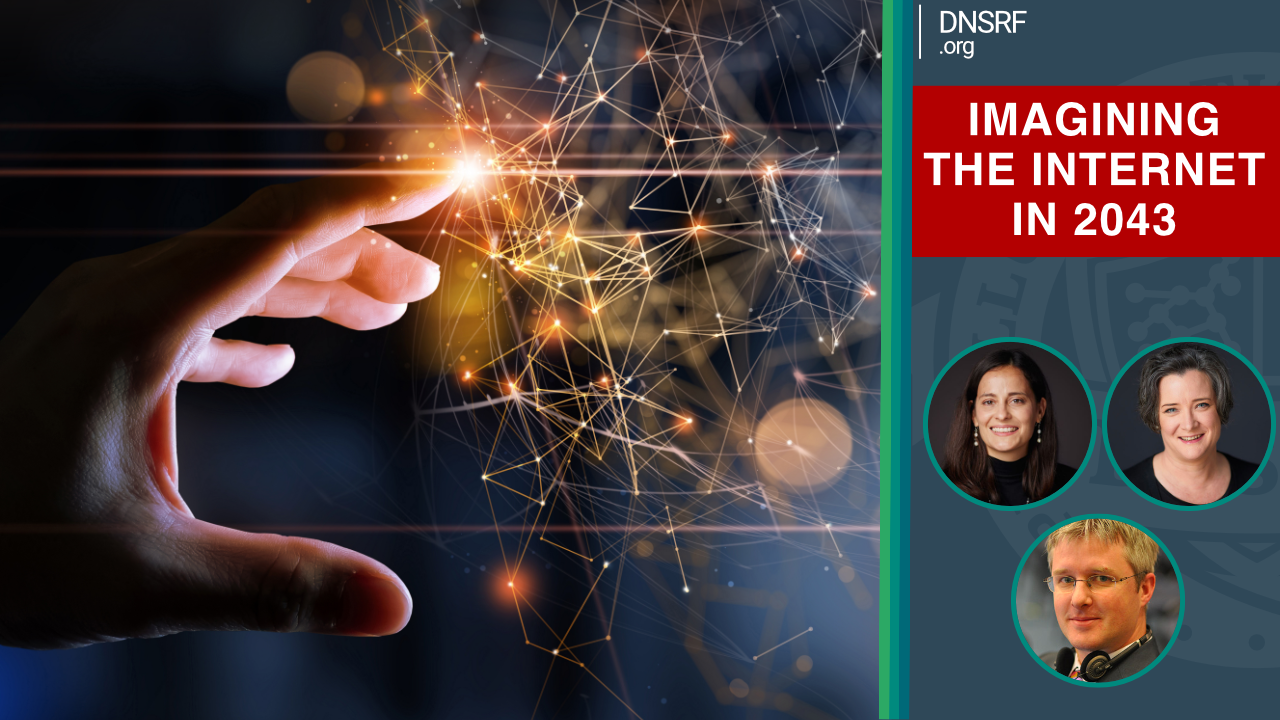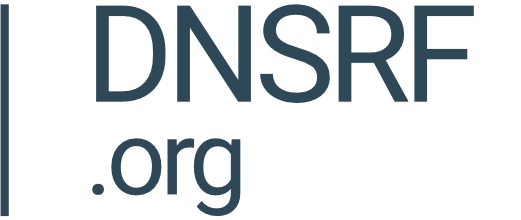The Internet in 20 Years Time: What we should have done differently

By Emily Taylor, Carolina Caeiro , Kieren McCarthy
The future of the internet - how it works and how users will experience it - is in flux. Decisions made now will impact future generations.
This paper outlines three scenarios for what the internet will look like in 20 years and asks what could have been done differently - and therefore what action is required now - to reach a preferred outcome.
The DNS Research Federation (DNSRF) has developed this as a roundtable discussion at the Internet Governance Forum 2023 (IGF) with an eye to the WSIS+20 review.
The three scenarios outlined in greater detail below are:
- current trends leading to a semi-fragmented Internet
- Internet fragmentation fully materialised through introduction of competing, non-interoperable architectures
- a strengthened global internet achieved through closer collaboration
Six discussants will comment on these potential scenarios, opening up a conversation about actions required today to safeguard the Internet as a global, interoperable network. They will be:
- Olaf Kolkman, from the Internet Society
- Raul Echeberria from the Latin American Internet Association
- Lorrayne Porciuncula from the Datasphere Initiative
- Sheetal Kumar from Global Partners Digital
- Izumi Aizu from Tama University and
- Henri Verdier, French Ambassador for Digital Affairs
A follow-up piece will be published after the IGF summarising outcomes.
Internet Fragmentation: Do we all mean the same thing?
Internet fragmentation has become an umbrella term used to refer to different phenomena affecting the online experience of Internet users across the world.
Ongoing technical, political and regulatory developments are transforming the global Internet. The evolution of the network’s technology inevitably strains its continued integrity and interoperability – in other words, the persistence of a single, global Internet. The IGF’s Policy Network on Internet Fragmentation (PNIF) has spent 18 months exploring this at length. In a recent working document prepared for IGF 2023, the PNIF has introduced a framework for discussing Internet fragmentation in three dimensions.
They are fragmentation of:
(i) the Internet’s technical layer
(ii) Internet governance and
(iii) the user experience
All three are impacted by technical, political and commercial developments. This paper and associated discussion does not intend to arrive at a commonly agreed definition of what is Internet Fragmentation, and instead, proposes to take the work of the PNIF as a departing point to understand the different dimensions of Internet fragmentation today, and how these may evolve in the near future.
It is hard to predict what the Internet will look like in 20 years.
This exercise outlines three possible trajectories. The goal is to distil what action is required today to prevent the undesirable scenario of a fragmented Internet, and identify shared, positive visions for the Internet of tomorrow.
SCENARIO ONE
Mixed networks coexisting with the traditional Internet
It’s 2043.
Holography, augmented and virtual reality, the metaverse and web 3.0 are established and contributing to the exploration of new forms of enhanced, edge computing. Storage and computing infrastructure is now extremely close to the user.
Specialised networks have emerged to deliver services reliant on haptic sensing and IoT and co-exist side-by-side with the traditional internet. These specialised networks interoperate with the Internet through gateways and offer high throughput and low latency.
The senders-pay model where large tech companies are obliged to pick up some of the cost of new networks was introduced in the EU over a decade ago, proved popular, and has now spread around the world. The result is Internet fast lanes but at additional cost to the user. Other applications with less stringent quality of service requirements continue to rely on the classic Internet.
The cost of specialised networks has led to new digital divides along both socioeconomic lines, and between the global south and global north1.
Alternative namespaces or alternative roots have also established themselves alongside the traditional naming and addressing systems. It results in collisions that are resolved to some degree through the user’s choice of browser - but each browser approaches the issue differently. Cybercriminals have been quick to exploit user confusion as well as gaps in governance between the different naming systems.
National internets remain with a number of new authoritarian governments adopting the Chinese model of a tightly controlled domestic internet. The European Union continues to draw up legislation to deal with content management and data localisation, causing fragmentation with other nations as new blocks of rules are adopted and adapted differently according to each nation’s cultural norms and aims.
SCENARIO TWO
A Fragmented Internet, with national or block politic internets
The Internet has fragmented.
The global network has formally split into different national internets or bloc politic internets drawn along ideological lines rather than just geography.
The evolution of edge computing offered an opportunity for those interested in greater forms of control to develop a new communication infrastructure with different properties to that of the Internet. Control of the network, down to the user level, is now possible. China’s New IP was standardised in small component parts in the late 2020s and is now embedded in China’s domestic networks. The Chinese-led technology is offered to the country’s trading partners. However, those that have deployed it complain of interoperability problems with the traditional Internet.
New types of networking have emerged that depart from the Internet’s design principles. They offer greater centralised control and claim lower abuse rates but lose critical properties that make it resilient and interoperable2 and have led to claims of surveillance, censorship and a loss of privacy, particularly among political dissidents and journalists. The once lightweight network layer now draws on information from the application layer.
Western stakeholders have maintained national or regional internets with strengthened security. Large technology companies using proprietary systems increasingly define the user experience and governments have become increasingly reliant on their cooperation to deal with incidences of cybercrime and misinformation.
Interoperability across the internet is not a given, with different networks implementing new standards without coordination, relying on gateways that are updated after-the-fact to patch over differences. There is a more limited flow of information across the globe.
A proposed UN treaty on cybercrime has stalled thanks to the lack of applicability across signatory nations and efforts to create new internet standards are increasingly seen through a geo-political lens.
SCENARIO THREE
A Strengthened Global Internet
Deeply held concerns about the risks of potential fragmentation of the internet led to renewed levels of multistakeholder collaboration with a more pragmatic focus. The result has been a strengthened, global Internet.
A hard-fought-for commitment to the Internet’s core architectural principles at WSIS+20 resulted in a new generation of Internet technologies focussed on maintaining interoperability while supporting new and emerging technologies. Following successful reform and consolidation efforts, the internet technical community now leads the way in evolving Internet standards that uphold the Internet’s critical properties3. These new Internet standards use case requirements, such as the Metaverse, while sticking to the Internet’s core architectural principles.
The Internet’s lightweight architectural design continues to drive connectivity, limiting the ability of companies to raise market or economic barriers. The digital divides that characterised the early part of the millennium have largely retreated, as non-governmental stakeholders work together to guarantee access to all, despite deadlock at the geo-political level.
The evolution of edge computing has driven new forms of Internet embeddedness. Internet users now have access to new applications and services online that offer easy and convenient connection to content, including far greater interactivity.
Human rights considerations are increasingly baked into new technology builds, with the focus placed on the end-user and their privacy considerations4.
Standards development organisations have diversified while upholding their values of openness. Internet governance has retained its multistakeholder ethos and capitalised on new technologies to develop more effective participation mechanisms.
QUESTIONS FOR DISCUSSION
- Which of the above scenarios do you think is most likely to occur, and why?
- Are there other scenarios that you believe are more likely to happen?
- Should we just accept Internet fragmentation as inevitable? Which stakeholders are most likely to suffer from fragmentation?
- What actions need to be taken now, and by which stakeholders, to deliver your preferred outcome?
1. https://isoc.app.box.com/v/SigcommEdgeEvolution. As put forth by Saltzer who argued the end-to-end design would be economically beneficial. J. H. Saltzer, D. P. Reed, and D. D. Clark. 1984. End-to-end arguments in system design. ACM Trans. Comput. Syst. 2, 4 (Nov. 1984), 277–288. https://doi.org/10.1145/357401.357402
2. See Standards, the new frontier for the free and open Internet, Carolina Caeiro, Mark McFadden and Emily Taylor, DNS Research Federation 2022, https://dnsrf.org/.kmedia/d3c1d810de1e98bdf7af7aa52406e837.pdf
3. As outlined by the Internet Society, these critical properties include: (a) a common protocol; (b) common global identifiers; (c) an open, interoperable architecture with voluntary adoption of standards; and (d) a general-purpose network with decentralised management and a distributed routing system. See The Internet Way of Networking: Defining the critical properties of the Internet, the Internet Society, 2020, https://www.internetsociety.org/resources/doc/2020/internet-impact-assessment-toolkit/critical-properties-of-the-internet/
4. Paragraph informed by exchanges with Sheetal Kumar from Global Partners Digital.


